If railways have transformed the economics, transportation, and society in the 18th century, it was the automobile that absolutely revolutionized society and business in the 20th century. Towards the end of 19th century and the first decades of twentieth, the car industry was in a nascent stage and only the wealthy could afford to buy one. The story of automobile development was about which of the three rival technologies: Steam, Electric and Internal Combustion Engine, would come to dominate as the source of power for the “Horseless Carriages”. Although the petrol-powered internal combustion engine would ultimately emerge as the winner in this race, seeing off the challenge of electric power in the process, the issue took several years to be resolved.
Of all the three competing technologies, only one seemed to emerge a likely winner for many years – The Electric Car. It offered early adopters the quietest and smoothest drive. Land speed records were set using electric cars. It was easy to start and so simple to drive that anyone could get used to it in a few hours and electricity was cheap and abundant in both US and Europe. Yet, despite these overwhelming advantages, the electric car failed to capture the market and consumers imagination. In the end, so thorough was the failure of electric cars and the domination of ICE that the role electric vehicles played in the early development of the automobile has been largely forgotten and relegated to footnote of history.
By 1900, there were 109 manufacturers who produced 4,192 vehicles. Steam cars accounted for 1,681 of these, 1,575 were electric, and 936 had internal-combustion engines.
World’s Fastest Man
Despite popular expectations, Americans were not the pioneers in early automobile adoption. It was the Europeans who set the pace and it was France that had the first car culture. A report by New York Times in 1899 from the bicycle and automobile show at Madison Square Garden observed that the normally avant-garde US was “far behind the European countries in adopting the bicycle and motor vehicles. France has paid the most attention to the latter, and motor carriage racers were very popular there.” From the earliest days, the French were enthusiastic supporters of electric power and France was the world’s leading motor manufacturer, with many companies catering to rich clients. One of the best known was Jeantaud, named after founder Charles Jeantaud.
Towards the end of 19th century, global attention was focussed on the race to become the world’s fastest man, an all-out exhibition of capabilities between the Belgian inventor and electric car pioneer Camille Jenatzy and the swashbuckling Count Gaston de Chasseloup-Laubat, the younger brother of the Marquis de Chasseloup-Laubat, who had founded the Automobile Club de France with his friend the Count de Dion to indulge his passion for motor racing.
It began in November 1898, when Paul Meyan, a founding member of the Automobile Club de France led in organizing a timed hill climb competition at Chanteloup, 32km north of Paris. It was a tortuous course, more than a mile up a winding gradient as steep as one-in-twelve at certain points. Fifty-four cars turned up for the inaugural event. The winning vehicle was driven by Camille Jenatzy, with an average speed of 27km/h and the car was electric. In second place was a Bollee petrol-powered car.
Challenged by Jenatzy’s achievement, a month later in December 1898, Chasseloup-Laubat led the charge to set a record for world’s first land speed record. The contest was no hill climb, but the contestants would fling their cars around a 2km stretch of the smoothest road in France in Acheres Park, between the towns of St Germain and Constans. Chasseloup-Laubat driving a chain driven rear-wheel drive Jeantaud electric racer made 40bhp, an enormous amount of power for 1898. Aided by an aerodynamic torpedo-shaped body and Fulmen batteries, he cracked the kilometre in 57sec at an average speed of 63.13km/h, shattering the record set just minutes earlier by a 3-litre Bollee by 9.6km/h. An electric car had shown itself to be superior to a noisy and smelly gasoline rival. Chasseloup-Laubat was hailed as the fastest man on earth.
The stage was set for an epic duel between the pre-eminent electric cars of the day with a new world record as the prize. What followed was a series of high-profile face-offs between the two drivers. Their record-breaking runs also helped publicize the cars manufactured by Jeantaud and Jenatzy. Over the course of the next few months, Both Jenatzy and Chasseloup-Laubat set speed records and breaking each other records with speeds of 66.65km/h, 70.31km/h, 80.33km/h and 92.69km/h.
The grand finale was set for April 1899. Jenatzy was confident he would set the land speed record of 100km/h and his secret weapon was his car. It had a sophisticated chassis with semi-elliptic leaf springs front and rear. Its lightweight cigar-shaped wind-cheating body was designed around the aerodynamic principles used by airship manufacturers and was fashioned from ‘partinium’, a new metal alloy of aluminium, tungsten and magnesium invented by a Frenchman called Henri Partin, powered by a pair of DC Postel-Vinay 33hp motors. The Michelin brothers Edouard and Andre, pitched in with special pneumatic tyres designed to run on the car’s 55cm wooden-spoked wheels. Certain that he had the right car to beat his rival, Jenatzy named it “La Jamais Contente” (Never Satisfied)
Jenatzy achieved it on 29 April 1899, in front of a large crowd he raced his car and set a new record of more than 105km/h. Jenatzy was ecstatic, he had become the first man to break the 100km/h barrier and had done so with ease and in an Electric Car. La Jamais Contente was a remarkable vehicle for its time, a pioneer of electric propulsion, direct drive, and aerodynamics. In 1899, electric cars were literally on top of the world.
In January 2010, more than a century after Jenatzy set his record, Michelin used La Jamais Contente at the Detroit Motor Show to publicize its part in the development of electric vehicles.
Horseless Carriages and Electric Cabs
Although electric cars were popular with wealthy individuals, at the beginning of the twentieth century, their greatest success was enjoyed as electric cabs. Electric ‘horseless carriages’ were popular in major cities of the world. Their advantages of smooth running, reliability and simplicity appeared to be a winning combination and led to the first attempt to create a truly nationwide personal transport infrastructure. The qualities and range of the EV’s by 1899 served the needs of daily transportation quite well. The electric delivery wagon was far better than the horse-drawn kind and it occupied half the space. The powerful torque of the electric motor allowed to carry a heavy load and the weight. They were also ideal for the city, accelerated quickly and unlike gasoline cars, stopped easily as well.
The most remarkable example of how things might have worked out differently for electric vehicles is the story of the Electrobat, an electric taxicab company that flourished in the late 1890s. The story began in 1894 when Henry Morris and Pedro Salom designed and built an electric vehicle in a mere two months – The Electrobat. Morris and Salom patented their idea and started production the following year. In 1896, they founded the Morris and Salom Electric Carriage and Wagon Company and continued to refine their design. They believed that Electrobat was an ideal product for the perfect inner-city hansom cab. By early 1897, a small fleet of Electrobat cabs were competing for business on the streets of New York, where the passenger sat at the front and the driver sat on top and behind like his predecessor, the coachman. New Yorkers came to know the drivers as “lightning cabbies” because the vehicles were powered by electricity. The novelty factor alone made the cabs popular with trendy travellers and they could be hired for a single trip, a day or even an entire month. As of June 1897, the Electrobats were doing steady business, 632 journeys carrying 1,580 passengers and covering 7,406km in a single month. Soon Electrobats built by Morris and Salom were operating on the streets of London and Paris, too.
The early success of Electrobats in America brought Morris and Salom’s invention to the attention of Isaac Leopold Rice, president of the Electric Storage Battery Company. He made Morris and Salom an offer and in September 1897, the Electric Carriage and Wagon Company became the Electric Vehicle Company, with a guaranteed supply of discounted batteries from the Electric Storage Battery Company. Soon Electrobats with improved design, better batteries and 5-inch tires made from half-inch robber hose and pumped to 60psi, were operating across various cities in America. New York was hit by blizzards in December 1897 and the bad weather continued into January 1899. The snow and hard-packed ice made it impossible for horse-drawn cabs, but Electrobats overcame them. The heavy battery packs and 5-inch tires meant they could carry on no matter how inclement the conditions. Dejected horse-drawn cab companies were forced off the road. They even advised desperate customers to try their electric rivals. Suddenly, everyone needed an electric cab.
According to Electrical World and Engineering magazine:
The cars ran through the whole night, the last coming in about 6 o’clock in the morning, by which time the snow had reached an average depth of about eight inches, and much more where drifted. Other cab companies turned over orders to the electric service rather than fill them themselves.
The same magazine also noted that:
In this country the electric automobile was the first to prove its claim for consideration on the score of convenience, economy, and other desirable features. It is generally conceded that the electric vehicle in urban service, or for use where the mileage limitations of storage batteries need not be considered, has no rival. In this field it is not probable that either gasoline or steam vehicles can trespass.
The Golden Age
According to automobile historian, Nigel Burton:
“The decade from 1900 to 1910 represented the Golden Age of electric cars. In the first year of the new century, nearly 40 per cent of the cars sold in the United States, the world’s largest market, were electric. Dozens of manufacturers sprang up to satisfy the demand for electric cars. Some, such as Oppermann, of London, Steinmetz of Baltimore, and the unlikely sounding Swiss company Triblehorn, only produced a small number of vehicles before they went bust, were taken over or gave up. Others, such as Columbia, Baker, Waverley, Studebaker, Rauch and Lang and Milburn, were among the largest motor manufacturers of the day. A few, like Lohner and Pieper, pioneered technology that would be refined by Toyota for the Prius hybrid nearly a century later. All of these car manufacturers had two things in common: they were sure that electrical power was the future and that a breakthrough in battery technology was ‘just around the corner”.
According to a popular publication of the time:
Many aristocratic people have become partial to the motor cars and employ them altogether for business and social routine. Some of them are so enthusiastic that they declare they will not bring their horses to the city for another winter but will leave them at their country places. In Europe the first adopters of Electric Cars were royalty and nobility.
Similarly, the first American car owners were Europeans by another name, members of the trans-Atlantic elite.
By 1901 the electric car had become the first choice of Royalty in Europe. British company Thrupp & Maberley had built an electric carriage for the Queen of Spain. Jeantaud of France had received orders from Prince of Milan and St. Petersburg and from the duchess of Alva in Madrid. Queen Alexandra of Britain took delivery of her first car in May 1901. She was so pleased with her possession that, Prince of Wales and future King, George V acquired one for himself.
In America, the late nineteenth century urbanization made getting about in an electric car far easier and the electric car industry made a more determined effort to create a viable charging infrastructure. Electricity was widely available and recharging a battery overnight was a minor inconvenience compared to hand-cranking a cold internal combustion engine into life first thing on a morning. Also, the IC car lacked the electric’s cultural weight. At the dawn of the automobile age, Americans saw electricity as futuristic, magical, and progressive. Anything electric was saturated with energy, and the nation came to admire “live wires”, “human dynamos”, and “electrifying performances”.
As the world’s largest manufacturer of horse-drawn carriages and harnesses, Studebaker was drawn to manufacture of automobiles. The company built its first ‘horseless vehicle’ in 1897 and by 1899, it was building bodies for third parties on a contractual basis, including the bicycle baron, Colonel Albert Augustus Pope, whose Columbia brand was one of the biggest names in electric cars. Three years later, Studebaker launched its own range of cars and their second customer for the electric carriage was Thomas Edison.
In the years that followed, as more people bought private cars, electric vehicles took on a new connotation: they were women’s cars. This association arose because they were suitable for short, local trips, did not require hand cranking to start or gear shifting to operate, and were extremely reliable by virtue of their simple design. Intrigued by the possibilities of electric cars, Ford bought a Detroit Electric for his wife, Clara, who complained she couldn’t start a Model T engine using its hand crank. By all accounts Clara was delighted.

Thomas Edison could not be far behind. His first electric vehicle, built in 1895, was a single-seat three-wheeler powered by two electric motors that produced 5bhp. The design never caught on, but regardless of the design drawbacks, Edison was convinced only a breakthrough in battery technology could make electric vehicles viable. Edison forecast that, In 15 years, more electricity will be sold for electric vehicles than for light. By 1903, Edison had created a nickel-iron battery for automotive applications and retro-fitted them to four large touring cars. He was mindful of the commercial potential for electric cars and became proponent of electric propulsion, pointing out the merits about, how easy they were to drive and how refined the powertrain would seem.
Edison’s battery breakthrough was a development of the nickel-iron cell invented by Waldemar Junger, the Swedish designer. The nickel-iron battery that Edison created specifically for transport applications had greater energy density than the lead-acid batteries that were in widespread use at the time. They could also be recharged in half the time and were far more robust, lasting for longer period. Edison spent $1.7m developing his new batteries and built a 200,000 sq. ft factory to make them. One of the first cars to use the Edison battery was the Detroit Electric, built by the Anderson Carriage Company.

By 1914, The Wall Street Journal reported that Ford was sufficiently interested in Edison’s ideas to be examining the possibility of building a low-cost electric vehicle. According to The New York Times, Ford was quoted as saying:
Mr Edison and I have been working for some years on electric automobiles which would be cheap and practicable. Cars have been built for experimental purposes, and we are satisfied now that the way is clear to success. The problem so far has been to build a storage battery of light weight which would operate for long distances without recharging. Mr Edison has been experimenting with such a battery for some time.
However, despite the grand plans the project was struggling. Although the car was a reality, and the first designs were based on the popular Model T chassis, the engineers were frustrated by Edison’s batteries. The 100 mile / 160km range was out of reach. Swapping the nickel-iron cells for lead-acid made the car too heavy. Ford reluctantly pulled the plug on the electric car project. Ford invested $1.5m in research and development before concluding that the electric car didn’t have a future. The work wasn’t entirely without merit, however, as it led to Ford’s adoption of the self-starter and electric lighting.
Decline and the Fall
By the 1920s, virtually every electric car manufacturer had gone out of business or thrown in the towel and moved on to making gasoline cars. In the space of just two decades the electric car had gone from a technology that “has no rival” to being utterly redundant. By the mid-1920s the gasoline motor car had the market in a vice-like grip. The battle for supremacy was over and electricity had lost. The victory was so overwhelming that, within a few years, the electric vehicle had been virtually erased from automotive history. The electric pioneers were overlooked or consigned to a footnote in history as mere technological curiosities.
How did this happen? What caused this dramatic fall from grace for the EV’s?
· By the 1920s, the US had an improved road system that connected different cities, bringing with it the need for longer range vehicles. The discovery of Pennsylvania and Texas crude oil coupled with the rise of Standard Oil, reduced the price of gasoline so that it was affordable to the average consumer. For a while, it was believed that gasoline cars would do the long-haul trips and electrics would dominate in the towns and cities. However, this theory only held good as long as automobiles were the playthings of the rich and famous, who could afford two vehicles. When Henry Ford introduced his affordably priced Model T, automobiles became an aspirational purchase decision for the middle classes, who could not afford two vehicles and had to decide on the better of the options available. Ultimately, the gasoline engine served society’s needs better than a battery-powered electric motor. Gasoline cars were further aided by the invention of the electric starter by Charles Kettering in 1912, which eliminated the need for the hand crank.
· Another major reason was the failure to create an electric vehicle infrastructure. Recharging stations could only be found in big cities, and even then, only for the wealthy élite, whereas gasoline was more easily available and at a far cheaper cost. The first gas station was built in St. Louis, MO, in 1905, and by 1920, gas stations made their way across the United States and filling up a car with gas became very easy, therefore switching to the internal combustion engine was not a surprise.
· And then there was the battery. Although Thomas Edison’s nickel-iron design was a huge improvement over the old lead battery, his hopes of creating a super battery with a long range and durability did not materialize. Though his batteries were designed with vehicle applications in mind, they had drawbacks. They were sensitive to cold, and the voltage would drop precipitously when the battery was under severe load. It was also expensive. The expense of running an electric vehicle versus a gasoline car became a decisive blow to the EV. Henry Ford’s gasoline cars had a relatively low cost compared to EVs. Recharging lead-acid batteries cost roughly 20 cents per kilowatt hour, compared with filling up with five cents a gallon gas back then. Then, as now, the battery remained the electric vehicle’s Achilles’ heel. Owners could not rely on an electric car to transport them more than a modest distance beyond urban limits and the problems of range were exacerbated by freezing weather, poor roads, and steep hills.
· The final nail in the coffin was the arrival of the Model T Ford on 1908, with its innovative design and its incredible value. The initiation of mass production of ICEVs by Henry Ford made these vehicles widely available and affordable in the $500–1000 price range. By contrast, the price of the less efficiently produced electric vehicles continued to rise. In 1912, an electric roadster sold for $1750, while a gasoline car sold for $650. By 1915, the cost of a Model T had been cut by almost 50 per cent to just $440, lot of money for the age, but eminently affordable for a middle-class wage earner. Despite its enormous output, Ford could barely keep up with demand. By 1919 every other car in the world was a Model T, or ‘Tin Lizzie’ as it became affectionately known.




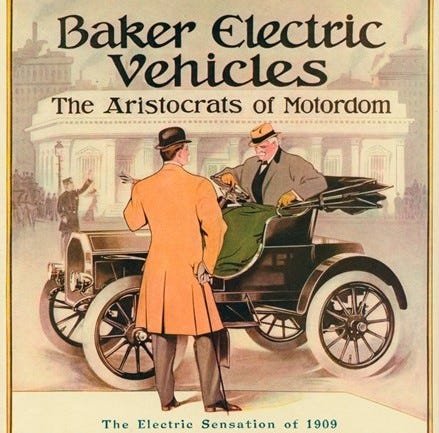
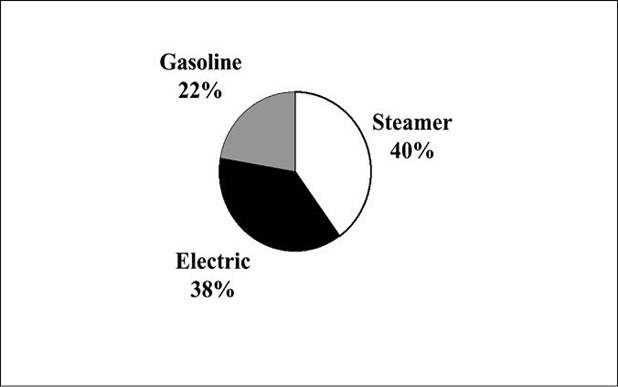
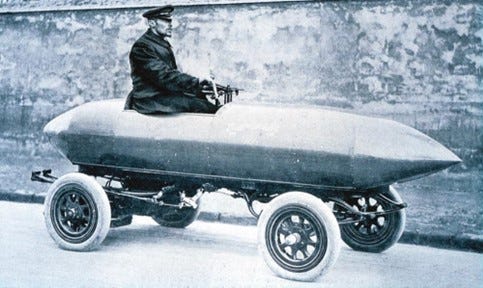
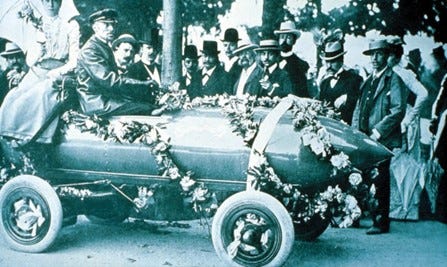
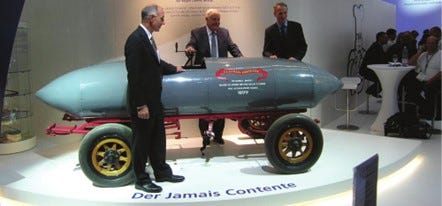
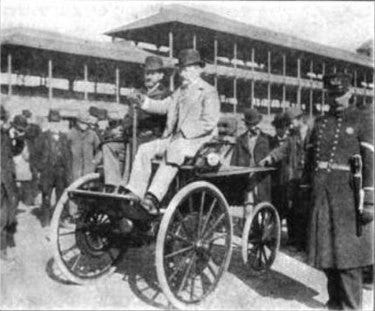


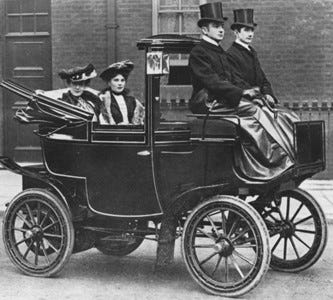



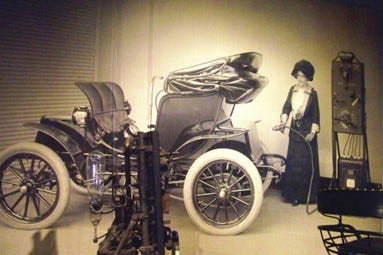
Amazing insights Srini. Most of us think that Electric Cars is a boon of the Modern world. very well written and researched.
Well researched. Appreciate bringing this part of the automotive history to us.